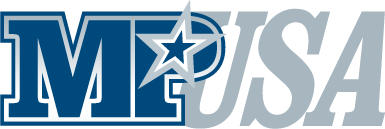
IMPRINT TYPES
Laser Engraving
Laser Engraving (or Laser Etching) is a subtractive manufacturing method that uses a laser beam to cut or carve a text or design on the surface of a hard object.
This process is mostly used to create images on the material, that may be seen at eye level. To do so, the laser creates high heat that will vaporize the matter, thus exposing cavities that will form the final image.
This method is best used in hard surface products such as tactical knives, flashlights, pens, and more.
Embroidery
Embroidery is used to decorate cloth by sewing patterns on it with thread available in a wide variety of color. Along with color, virtually any design can be made on any soft, cloth surface. On some surfaces, such as T-shirts, this method may be undesirable because it creates a hard patch underneath it that can be “stiff”. Luckily there are other methods available.
This method is best used in soft cloth surfaces products such as hats, backpacks, patches, towels, and more.
Silk Screen / Screen Printing
Most people are familiar with this popular method of imprinting. Silk screening is done by using a screen of fine mesh.
The basic idea behind silk screening is pretty simple and works similar to a stencil. Instead of cutting out shapes individually, you coat a screen in photo emulsion, then cut an image out using a bright light.
This method is best used on flat soft cloth surface products such as shirts, polos, jackets, and more.
Heat Transfer
Also referred to as sublistatic printing, heat transfer is the technique of printing fabric by transferring a printed design from paper to fabric by way of heat and pressure.
The printed image is placed against the desired substrate (commonly a fabric, such as a T-shirt) and subjected to high temperature (commonly 375ºF) and pressure (60 pounds) for a short period of time (12.15 seconds is common). After the substrate has cooled, the release paper is peeled away and the image will have been transferred to the substrate.
This method is best used on flat soft cloth surface products such as shirts, polos, jackets, and more.
Full Color Sublimation
Full color sublimation uses a 3D vacuum heat press that allows heat transfer onto materials with a curved edge or shape. This means that sublimation can be used for pre-treated objects, such as smart phone covers, mugs, ceramic plates, picture frames, sporting goods, buttons and more.
Die Casting / Die Struck
Die casting is done by making a metal object by pouring molten metal into a mold
The castings that are created in this process can vary greatly in size and weight; ranging from a couple ounces to 100 lbs. Most metal housings are made using a die cast.
Die Striking is a process that uses an immense amount of pressure to form precious metal into a desired shape.
This process produces a product that is far superior to the industry standard of casting. Die striking metal is put under extreme pressure creating a product that is 33% stronger and more dense than a casting.
We make all of our custom coins with these processes.






